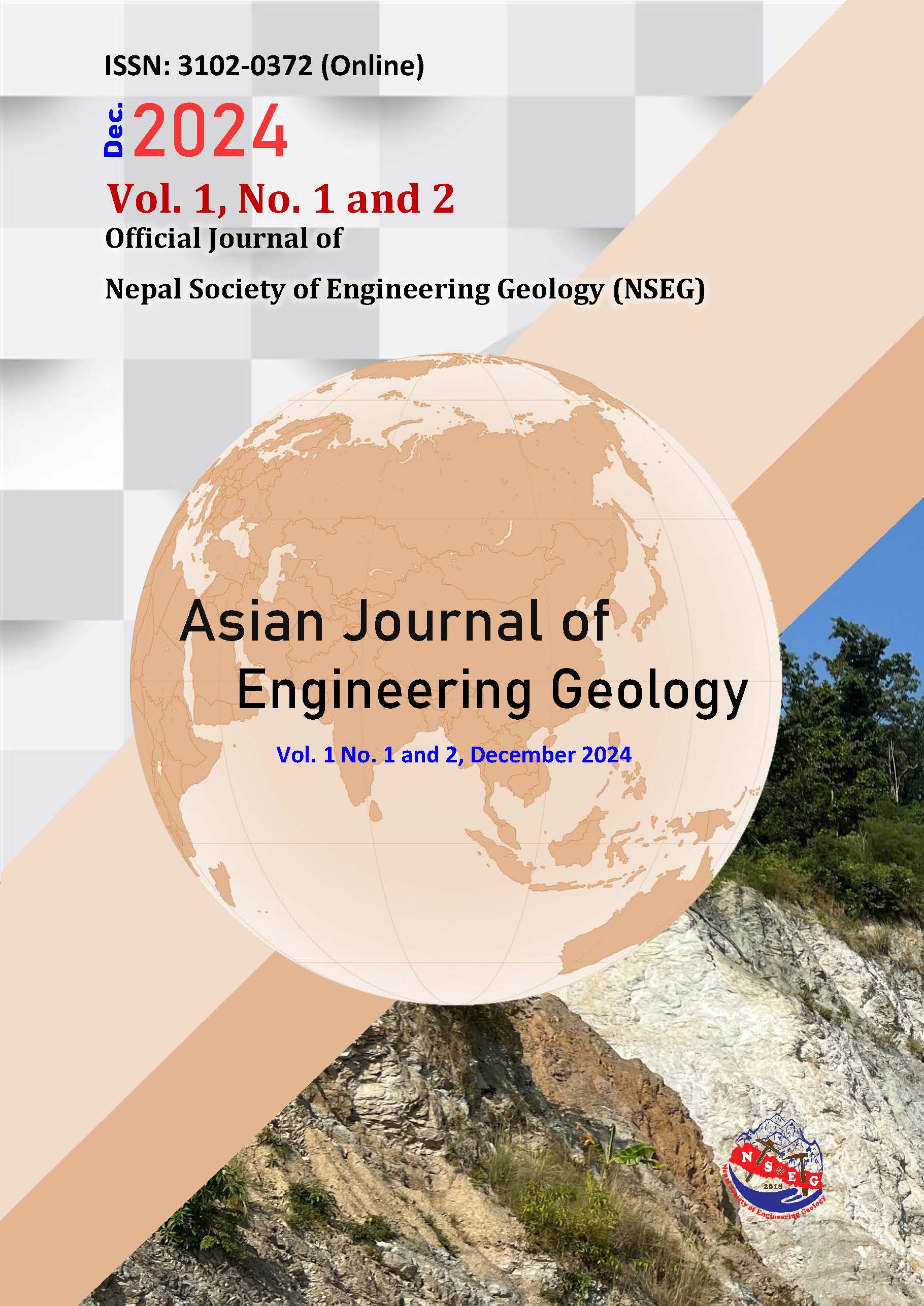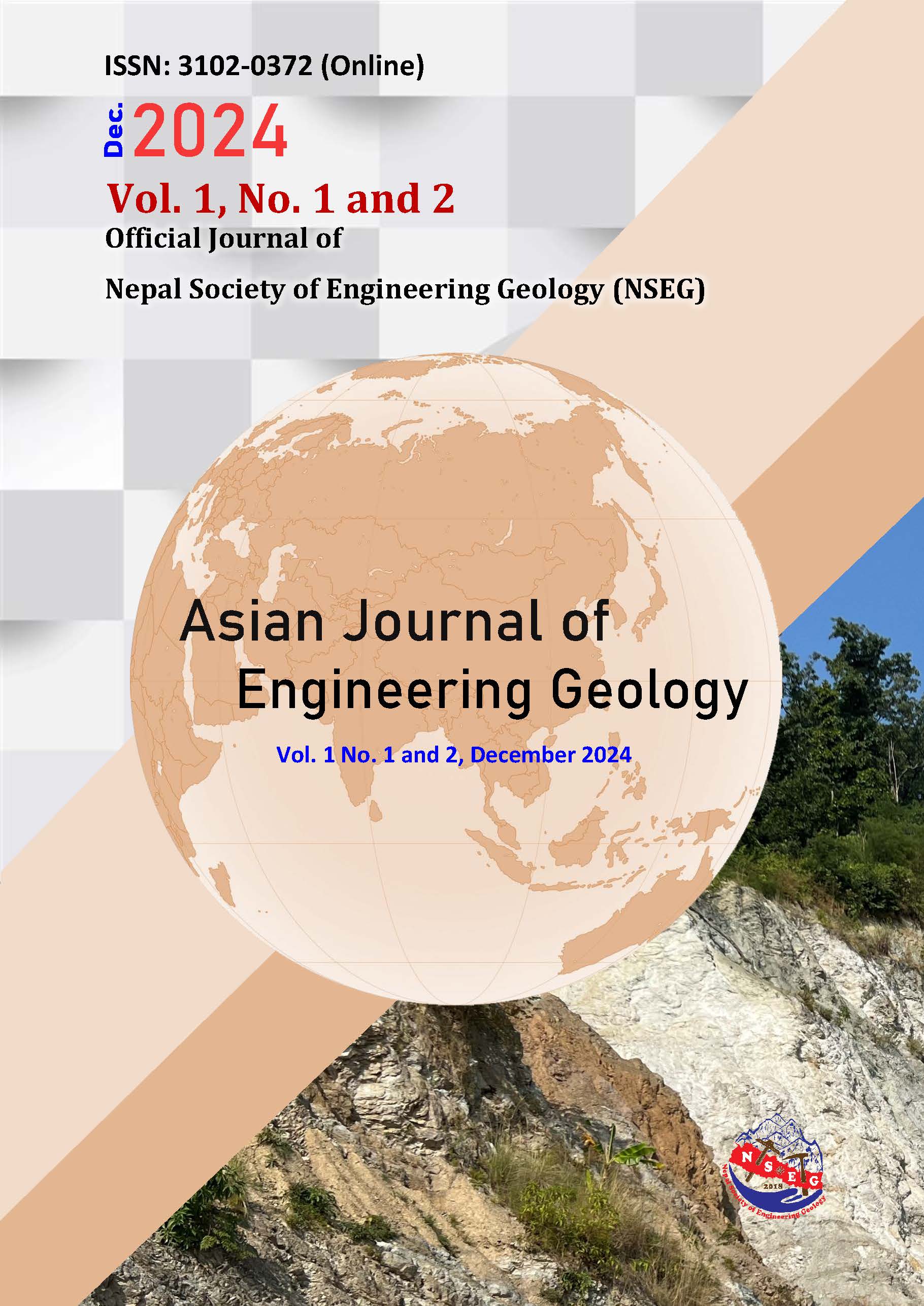Red Relief Image Maps to Visualize Landslide Risks in Master-Planned Storage-Type Hydropower Projects in Nepal Using a Free and Open-Source GIS Approach
DOI:
https://doi.org/10.64862/ajeg.112.03Keywords:
Deep Seated Landslides, QGIS, Red Relief Image Map, RRIM, Storage-type Hydropower, Reservoir, Topographic Openness, 3D Terrain VisualizationAbstract
The development of storage-type hydropower projects is crucial for enhancing energy security and managing water resources in Nepal. However, these projects often face significant challenges related to terrain stability, particularly in landslide-prone regions of the Nepal Himalayas. This study presents an innovative approach to terrain visualization using Red Relief Image Maps (RRIM) generated through free and open-source GIS tools. This article presents RRIM visualization techniques developed entirely with free and open-source GIS tools, such as QGIS and Topographic Openness. The selection criteria for these techniques prioritize simplicity and speed of implementation while ensuring their suitability for effective visualization. The study focuses on the application of these techniques to Nationwide Master Planned Storage-type Hydropower Projects in Nepal. By generating and analyzing several RRIM, the article demonstrates how these tools can aid in visualizing terrain features and identifying potential risks associated with deep-seated landslides distribution. The RRIM has been prepared for all 20-master planned storage-type hydropower, diversion and multipurpose projects of Nepal. Additionally, the integration of 3D map visualization of the RRIM enhances the understanding of the terrain’s topography and landform. The findings highlight the effectiveness of RRIM and open-source GIS tools in enhancing geohazard assessment and planning for sustainable infrastructure development in future.
References
Alaska (2024), Alaska Satellite Facility. Retrieved from https://asf.alaska.edu. Accessed on 2024-07-08.
Bhandary N. P., Yatabe R., Hasegawa S. and Dahal R. K. (2011). Characteristic features of deep-seated landslides in Mid-Nepal Himalayas: spatial distribution and mineralogical evaluation. In Geo-Frontiers 2011: Advances in Geotechnical Engineering, 1693-1702. https://doi.org/10.1061/41165(397)173.
Chiba T., Kaneta S. and Suzuki Y. (2008). Red relief image map: new visualization method for three-dimensional data. The International Archives of the Photogrammetry, Remote Sensing and Spatial Information Sciences, XXXVII, 1071-1076.
Copernicus (2024). Copernicus Open Access Hub. Sentinel-2 imagery. European Space Agency. Retrived from https://www.copernicus.eu/en. Accessed on 2024-02-03.
Dahal R.K. (2015). Understanding of Landslide Science in the Nepal Himalaya. In: Lollino, G., et al. Engineering Geology for Society and Territory- Volume 2. Springer, Cham. https://doi.org/10.1007/978-3-319-09057-3_228.
Daxer C. (2020). Topographic Openness Maps and Red Relief Image Maps in QGIS. Technical Report, 17p. https://doi.org/10.13140/RG.2.2.18958.31047.
DoED (2024) Department of Electricity Development (DoED), GoN Project Bank: Under Study Projects, Retrieved from http://www.doed.gov.np. Accessed on 2024-06-24.
NEA and JICA (2014). Nepal Electricity Authority (NEA) and Japan International Cooperation Agency (JICA) report of Nationwide Master Plan Study on Storage-type Hydropower Power Development in Nepal, NEA, Nepal. Unpublished Report, 102p. Retrieved from https://openjicareport.jica.go.jp/pdf/12147310.pdf Accessed on 2024-06-06.
Timalsina K. and Paudyal K. R. (2018). Fault-controlled geomorphic features in Ridi-Shantipur area of Gulmi District and their implications for active tectonics. Journal of Nepal Geological Society, 55 (1), 157–165. https://doi.org/10.3126/jngs.v55i1.22807.
Timilsina M., Bhandary N.P., Dahal R.K. and Yatabe R. (2017). Large-Scale Landslide Inventory Mapping in Lesser Himalaya of Nepal Using Geographic Information System. In: Yamagishi H., Bhandary N. (eds) GIS Landslide. Springer, Tokyo. https://doi.org/10.1007/978-4-431-54391-6_6 .
Yokoyama R., Shirasawa M. and Pike R.J. (2002). Visualizing topography by openness. A new application of image processing to DEMs. Photogrammetric Engineering & Remote Sensing, 68, 257-265. Retrieved from https://www.asprs.org/wp-content/uploads/pers/2002journal/march/2002_mar_257-265.pdf. Accessed on 2024-05-12.
Downloads
Published
Data Availability Statement
The primary data source for this study was an ALOS PALSAR Digital Elevation Model (DEM) with a resolution of 12.5 x 12.5 meters, obtained from https://search.asf.alaska.edu. and The open-source software QGIS can be downloaded from https://www.qgis.org/.
Issue
Section
License
Copyright (c) 2024 Nepal Society of Engineering Geology (NSEG)

This work is licensed under a Creative Commons Attribution 4.0 International License.




